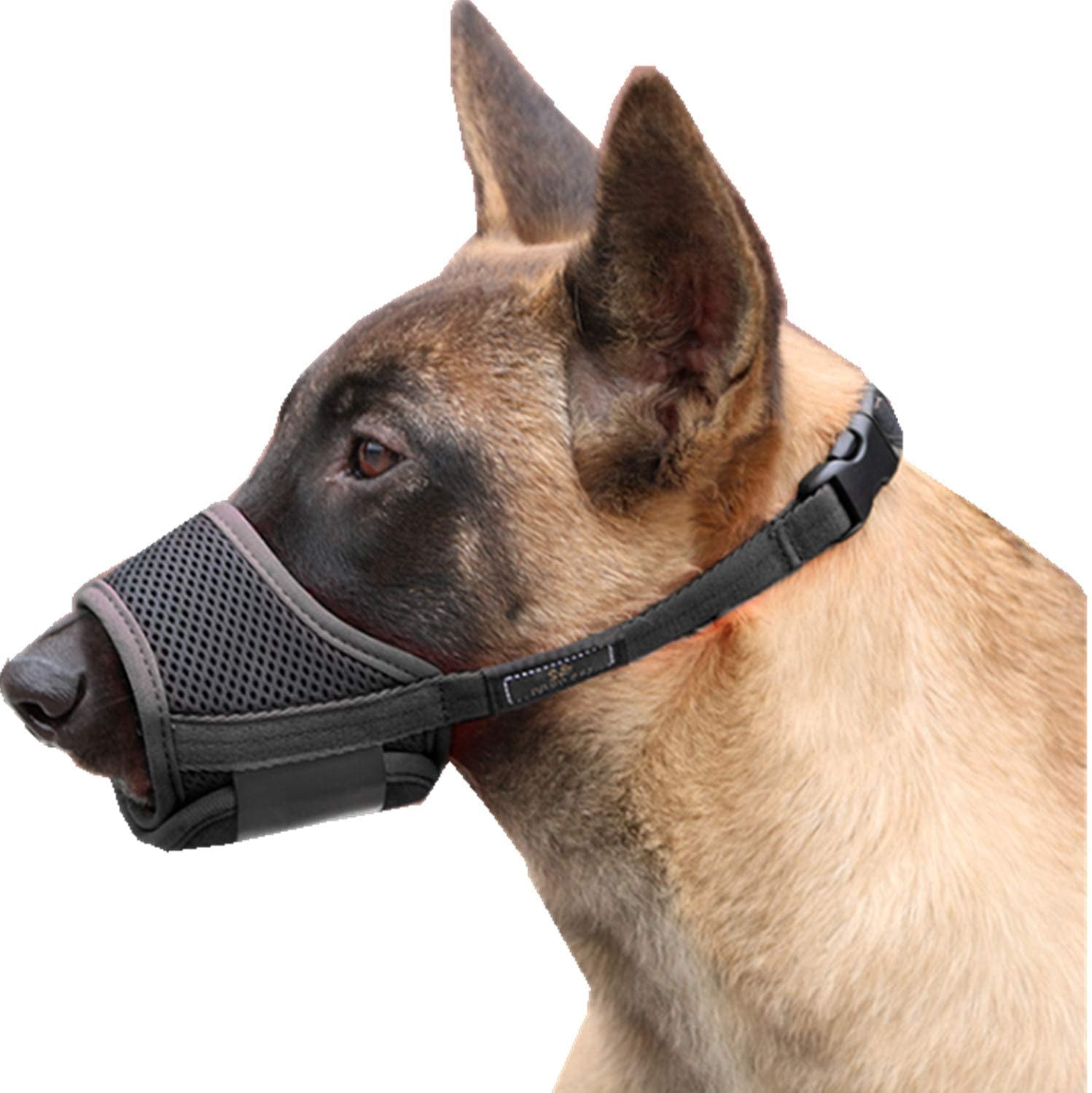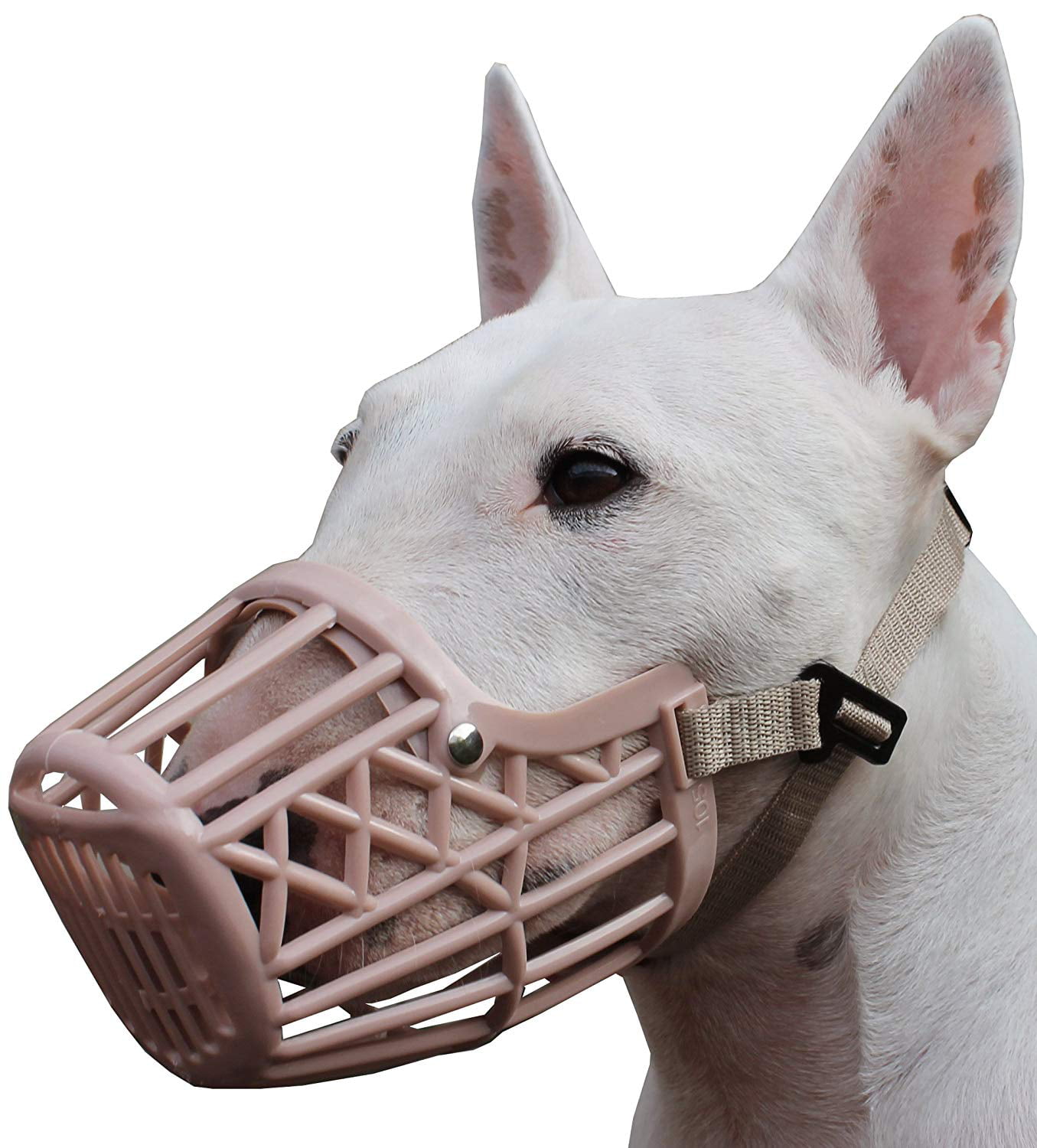
Mask-style mesh muzzle for a brachycephalic dog this one is sold by VetMed Solutions. Muzzle training is not just about physical safety it’s also an investment in your dog’s emotional health and well being. In contrast, however, if you’ve taught your dog to feel really good about the muzzle, even if the behavior of wearing a muzzle degrades, it may only decrease from “I like my muzzle!” to “I can tolerate my muzzle.”
Muzzle for dogs free#
If under the best circumstances – relaxed at home, free from pain, away from potentially scary things – your dog only tolerates wearing a muzzle, the introduction of such stressors can lower the dog’s tolerance to “I hate everything that’s happening!”

It’s important to build a slow, thoughtful development of a positive association with the muzzle – as opposed to simple tolerance – because behavior degrades under stress. We want our dog to feel really good about the muzzle. We don’t want our dog to simply submit to the muzzle, letting us put it in place without an objection. Teaching your dog to be comfortable in a muzzle is important. These muzzles are often used in vet hospitals or by groomers for brief periods to protect handlers from a dog who is frightened or in pain. They are more restrictive than basket muzzles, and prevent a dog from opening its mouth enough to pant, so they should be used only for a few minutes at a time, and not outdoors (where the risk of overheating is greater). Sometimes called “soft muzzles,” “sleeve muzzles,” or “grooming muzzles,” they are usually made from nylon, mesh, or leather. * Then there are muzzles that encase the snout like an open-ended sheath and buckle around the neck.

Muzzles like this are for brief use only, as they restrict panting. The open weave of the basket makes it possible for the dog to eat and drink, making a good choice for muzzle-training programs. While a basket muzzle limits the degree to which a dog can open its mouth, a properly fitted basket muzzle allows the dog to relax its mouth enough to pant. They are typically made from plastic, rubber, or silicone. * “Basket” muzzles encase the dog’s snout in a basket with straps fastened around the neck and head. In some areas, dogs – or certain breeds of dogs – are required to wear a muzzle when in public. In some cases, a muzzle can be safely used to prevent the ingestion of dangerous items, while allowing the dog to explore on a walk to prevent the dog from harming wildlife or even as added security in situations where you aren’t sure how the dog will react. A muzzle should never replace training to address the root of the issue that leads to the potential bite risk, but it’s a great safety net in case things don’t go as planned during a training session. A muzzle can be a valuable tool to help ensure the safety of other people and animals when working on a behavior modification program. ✔ As “insurance” when working through a training plan. When a dog is in pain, fearful, and/or pushed past her limits, she may pose a bite risk, so the use of a muzzle keeps everyone safe. Muzzles can be used to help keep people and other animals safe in a variety of circumstances:

In reality, there are plenty of reasons why even the most mild-mannered, sociable dogs might need to be muzzled, along with numerous situations where using a muzzle is an act of responsible dog ownership. Muzzles, and the dogs who wear them, often get a bad rap, as many people associate them with dogs who may display aggressive behavior.


 0 kommentar(er)
0 kommentar(er)
